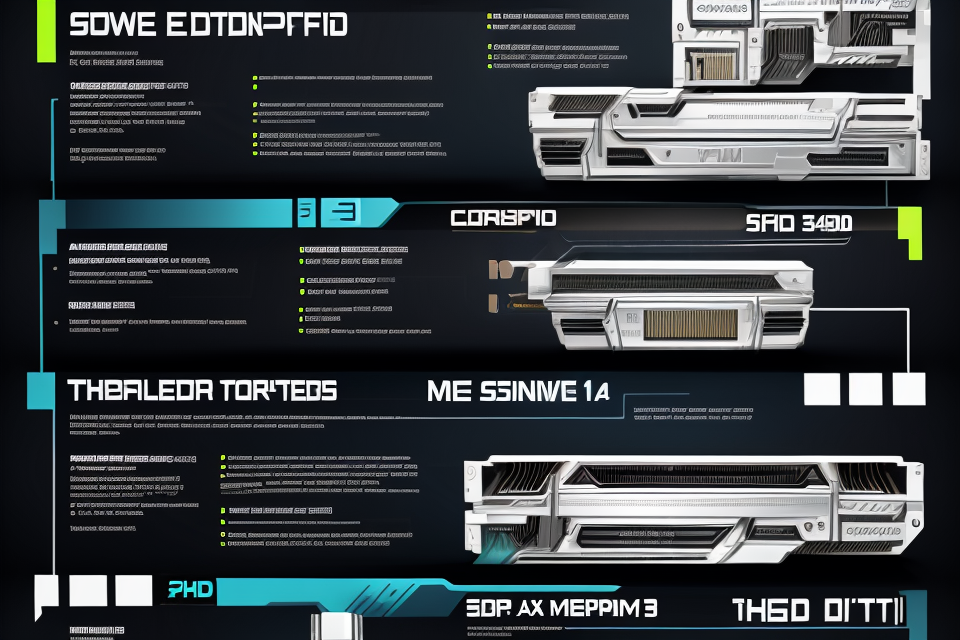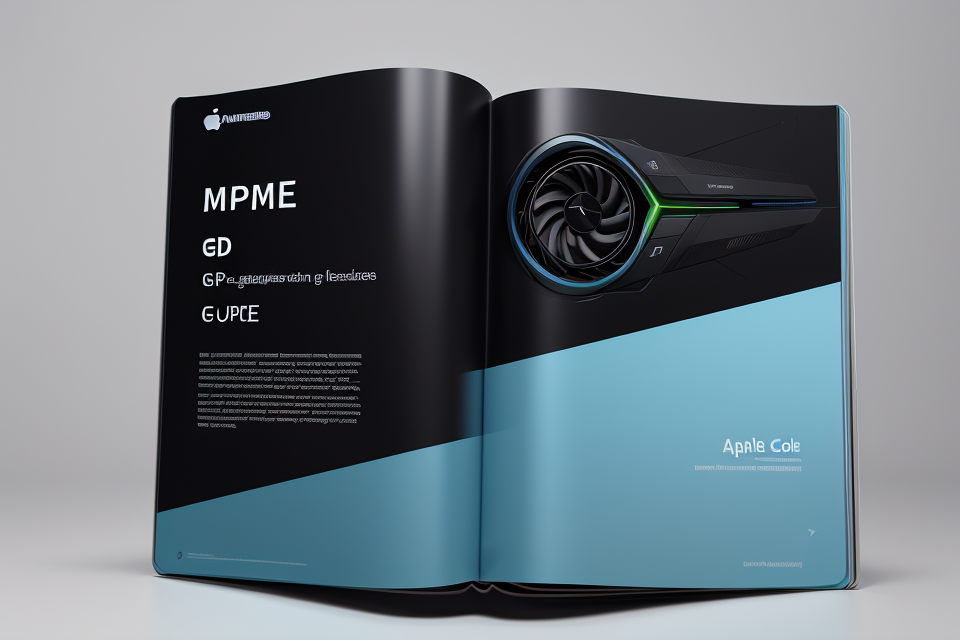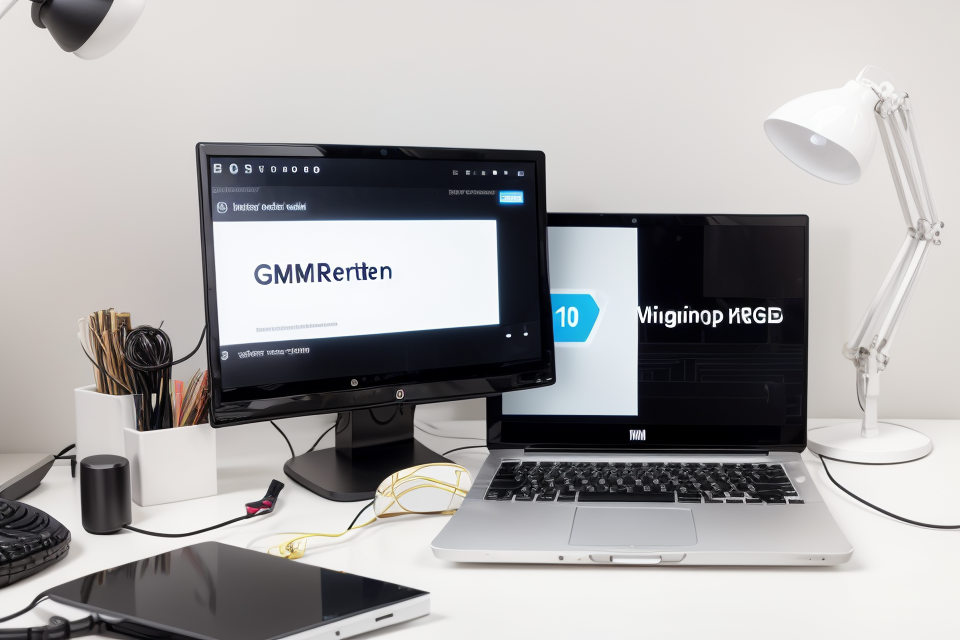
If you’re a gamer or a professional who relies on graphics-intensive applications, you probably know the importance of having a powerful graphics card. And if you’re using an Nvidia graphics card, you might be wondering how to determine its size. In this article, we’ll guide you through the process of finding out the size of your Nvidia graphics card.
Determining the size of your Nvidia graphics card is essential to ensure that it’s compatible with your system and can handle the demands of your applications. With just a few simple steps, you can easily find out the size of your graphics card and make sure it’s up to the task. So, let’s get started!
To determine the size of your Nvidia graphics card, you can look at the specifications provided by Nvidia or by checking the size of the graphics card on the manufacturer’s website. You can also check the size of the graphics card by checking the dimensions of the card itself, as most graphics cards will have their dimensions listed on the packaging or in the product specifications. Additionally, you can use software such as GPU-Z or MSI Afterburner to check the size of your graphics card in real-time.
Understanding the different sizes of Nvidia graphics cards
Factors affecting the size of Nvidia graphics cards
The size of an Nvidia graphics card can be affected by several factors. Here are some of the most important ones:
- Form factor: The form factor of a graphics card refers to its physical size and shape. Nvidia graphics cards come in different form factors, including PCIe, PCIe mini, and PCIe low-profile. The size of the graphics card will depend on the form factor, with larger cards requiring more space in the computer case.
- Number of display outputs: The number of display outputs on a graphics card can also affect its size. If a graphics card has multiple display outputs, it may require more space to accommodate the additional connectors.
- Cooling solution: The cooling solution used on a graphics card can also impact its size. Graphics cards with more advanced cooling solutions, such as liquid cooling, may be larger than those with standard air cooling.
- Power consumption: The power consumption of a graphics card can also impact its size. Graphics cards that require more power may need larger power supplies or additional cooling to prevent overheating.
In summary, the size of an Nvidia graphics card can be affected by several factors, including its form factor, number of display outputs, cooling solution, and power consumption. Understanding these factors can help you determine the size of your Nvidia graphics card and ensure that it is compatible with your computer case.
How to determine the size of your Nvidia graphics card
To determine the size of your Nvidia graphics card, there are several factors you can consider. These include:
- Manufacturer’s specifications
- Physical dimensions of the card
- Number of display outputs
- Cooling solution
- Power consumption
Here’s a more detailed look at each of these factors:
Manufacturer’s specifications
The first step in determining the size of your Nvidia graphics card is to check the manufacturer’s specifications. This information can usually be found on the manufacturer’s website or in the documentation that came with the card. The specifications will typically include the card’s model number, as well as its dimensions, power requirements, and other important details.
Physical dimensions of the card
Another way to determine the size of your Nvidia graphics card is to measure its physical dimensions. The dimensions of the card will vary depending on the model, but typically the length, width, and height of the card will give you an idea of its size.
Number of display outputs
The number of display outputs on your Nvidia graphics card can also give you an idea of its size. Most cards have one or two display outputs, but some higher-end models may have four or more. The more display outputs a card has, the larger it is likely to be.
Cooling solution
The cooling solution on your Nvidia graphics card can also indicate its size. Many lower-end cards have a simple heat sink and fan, while higher-end cards may have more complex cooling solutions, such as multiple fans or a liquid cooling system. The more sophisticated the cooling solution, the larger the card is likely to be.
Power consumption
Finally, the power consumption of your Nvidia graphics card can give you an idea of its size. Most cards require a minimum power supply of 300 watts, but higher-end cards may require more. The more power a card requires, the larger it is likely to be.
In conclusion, by considering these factors, you can determine the size of your Nvidia graphics card. Keep in mind that the size of the card will also affect its performance, so it’s important to choose a card that meets your needs.
Understanding the importance of knowing the size of your Nvidia graphics card
Compatibility with your computer case
When it comes to installing a graphics card in your computer, it is important to ensure that it is compatible with your computer case. The size of your graphics card can affect the compatibility with your computer case, and it is essential to choose a card that fits properly.
One of the most important factors to consider is the size of the graphics card. Different graphics cards come in different sizes, and the size of the card can impact the compatibility with your computer case. Some graphics cards are designed to fit into smaller cases, while others are larger and may require a more substantial case to accommodate them.
To determine the size of your Nvidia graphics card, you need to measure the length, width, and height of the card. This will give you an idea of how much space the card takes up and whether it will fit into your computer case. It is also important to consider the power supply unit (PSU) of your computer, as some graphics cards require more power than others, and this can impact the compatibility with your PSU.
When choosing a graphics card, it is essential to consider the size of the card and how it will fit into your computer case. You should also take into account the power requirements of the card and whether your PSU can handle the additional power demand. By doing so, you can ensure that your graphics card is compatible with your computer case and that it will perform optimally.
Upgrading and replacing your graphics card
- Knowing the size of your graphics card will help you when upgrading or replacing it
Upgrading or replacing your graphics card can be a great way to improve the performance of your computer. However, before you can do this, you need to know the size of your current graphics card. This will help you determine whether you need to purchase a new card that is compatible with your computer, and it will also help you choose a card that has the right specifications for your needs.
There are several ways to determine the size of your Nvidia graphics card. One way is to check the manual that came with your computer, as it should list the specifications of all the components, including the graphics card. Another way is to use a system information tool, such as CPU-Z or HWiNFO, which can provide detailed information about your graphics card, including its size and speed.
Once you have determined the size of your graphics card, you can start looking for a replacement that meets your needs. If you are looking for a higher-end card, you may want to consider a card with a larger size and more powerful specifications. On the other hand, if you are looking for a more budget-friendly option, you may want to consider a smaller card with less powerful specifications.
It is important to note that not all graphics cards are compatible with all computers. Before purchasing a new card, make sure to check the compatibility with your computer’s motherboard and power supply. Additionally, you should also consider the size of the card and whether it will fit in your computer’s case.
In conclusion, knowing the size of your Nvidia graphics card is essential when upgrading or replacing it. By checking the manual, using system information tools, and considering compatibility, you can find a new card that meets your needs and improves the performance of your computer.
Choosing the right graphics card for your needs
Choosing the right graphics card for your needs is essential to ensure that your computer runs smoothly and efficiently. A graphics card is responsible for rendering images and video on your computer, and the size of the card can impact its performance.
Here are some factors to consider when choosing a graphics card:
- Performance: The size of the graphics card can affect its performance. A larger card will generally offer better performance than a smaller one. However, it’s important to consider the other components in your computer as well, such as the CPU and RAM, as they can also impact performance.
- Compatibility: Make sure that the graphics card you choose is compatible with your computer‘s motherboard and power supply. Check the manufacturer’s specifications to ensure that everything is compatible.
- Budget: Graphics cards can vary widely in price, so it’s important to set a budget before making a purchase. Keep in mind that a higher-end card will generally offer better performance, but it may also come with a higher price tag.
- Purpose: Consider what you will be using your computer for. If you plan to use it for gaming or video editing, a more powerful graphics card may be necessary. On the other hand, if you only use your computer for basic tasks such as web browsing and document editing, a lower-end card may suffice.
In conclusion, knowing the size of your Nvidia graphics card is important when choosing a card that meets your performance needs. By considering factors such as performance, compatibility, budget, and purpose, you can make an informed decision when selecting a graphics card for your computer.
FAQs
1. How can I determine the size of my Nvidia graphics card?
To determine the size of your Nvidia graphics card, you can check the specifications of your computer or refer to the manufacturer’s website. You can also check the model number of your graphics card, which is usually printed on the card itself or listed in the system information of your computer.
2. What is the difference between a small, medium, and large Nvidia graphics card?
The size of an Nvidia graphics card refers to the physical size of the card and the amount of video memory it has. A small graphics card typically has 2GB or less of video memory, a medium card has between 2GB and 4GB of video memory, and a large card has 4GB or more of video memory. The size of the card can also affect its performance and power consumption.
3. Can I upgrade my Nvidia graphics card to a larger size?
It depends on the specific model of your graphics card and your computer’s hardware. Some graphics cards are designed to be upgradable, while others are not. Before attempting to upgrade your graphics card, it’s important to research the compatibility and installation requirements to ensure that it will work with your system.
4. How do I know if my Nvidia graphics card is compatible with my computer?
To determine if your Nvidia graphics card is compatible with your computer, you should check the system requirements of your operating system and the specifications of your graphics card. You can also check the manufacturer’s website for compatibility information. If you’re unsure, you can contact the manufacturer or a computer expert for assistance.
5. Can I use a different brand of graphics card in my computer?
It depends on the specific model of your computer and the brand of the graphics card you want to use. Some computers are designed to work with specific brands or models of graphics cards, while others are more flexible. Before attempting to install a different brand of graphics card, it’s important to research the compatibility and installation requirements to ensure that it will work with your system.


